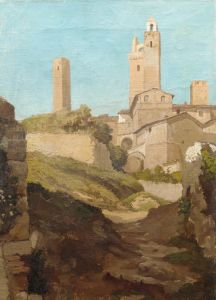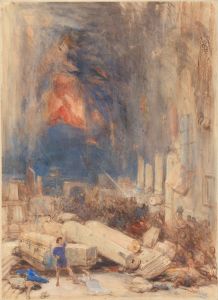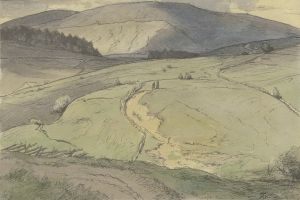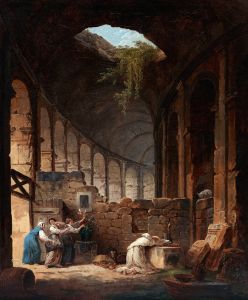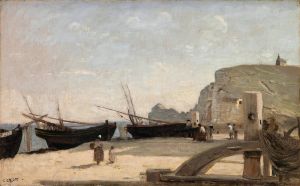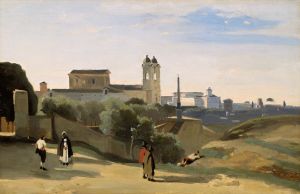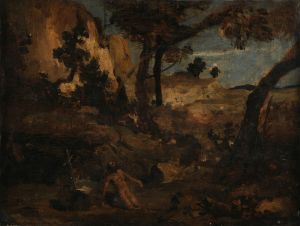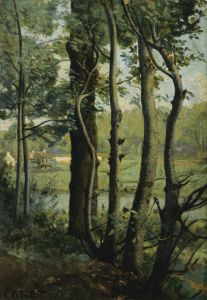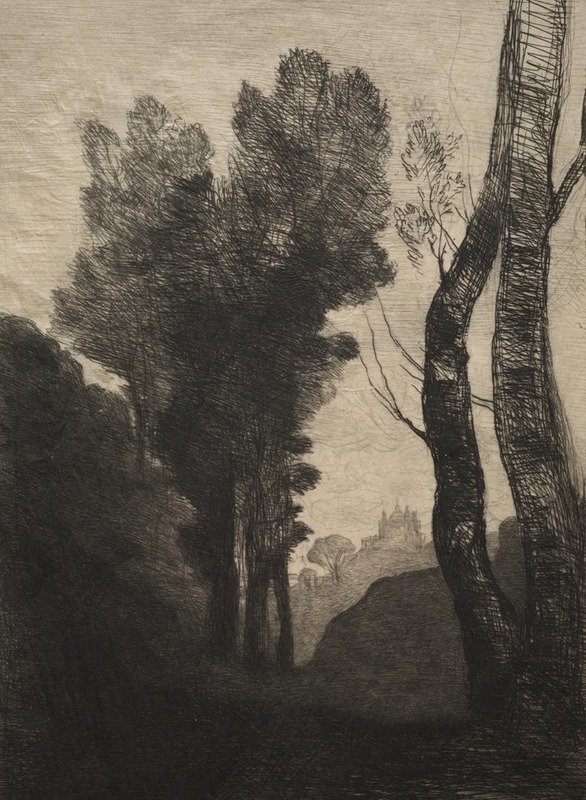
Environs of Rome
A hand-painted replica of Jean-Baptiste-Camille Corot’s masterpiece Environs of Rome, meticulously crafted by professional artists to capture the true essence of the original. Each piece is created with museum-quality canvas and rare mineral pigments, carefully painted by experienced artists with delicate brushstrokes and rich, layered colors to perfectly recreate the texture of the original artwork. Unlike machine-printed reproductions, this hand-painted version brings the painting to life, infused with the artist’s emotions and skill in every stroke. Whether for personal collection or home decoration, it instantly elevates the artistic atmosphere of any space.
Jean-Baptiste-Camille Corot's painting "Environs of Rome" is a notable work by the French landscape artist, who is widely recognized for his contributions to the Barbizon School and as a precursor to the Impressionist movement. Corot, born in 1796 in Paris, was known for his ability to capture the essence of a landscape with a delicate balance of realism and poetic interpretation. His work often reflects a deep appreciation for nature and a keen observation of light and atmosphere.
"Environs of Rome" is one of Corot's many paintings that depict the Italian landscape, a subject he explored extensively during his travels to Italy. Corot first visited Italy in 1825, and the experience had a profound impact on his artistic development. The Italian countryside, with its unique light and classical ruins, provided him with a wealth of inspiration. This painting is believed to have been created during one of his trips to Italy, where he spent time studying and painting the Roman Campagna, the rural area surrounding Rome.
In "Environs of Rome," Corot captures the serene and timeless quality of the Italian landscape. The painting typically features a harmonious composition, with gentle rolling hills, distant mountains, and a tranquil sky. Corot's use of soft, muted colors and his skillful rendering of light create a sense of calm and tranquility. The painting reflects his ability to convey the mood and atmosphere of a place, inviting viewers to experience the quiet beauty of the natural world.
Corot's technique in this painting, as in many of his works, involves a careful balance between detailed observation and a more generalized, atmospheric approach. He often painted en plein air, or outdoors, which allowed him to capture the changing effects of light and weather on the landscape. This method was relatively innovative at the time and influenced later artists, particularly the Impressionists, who admired Corot's ability to depict the fleeting qualities of nature.
"Environs of Rome" is representative of Corot's mature style, which blends elements of realism with a lyrical, almost dreamlike quality. His landscapes are not merely topographical records but are imbued with a sense of emotion and personal reflection. This approach set Corot apart from many of his contemporaries and earned him a lasting place in the history of art.
Throughout his career, Corot remained dedicated to landscape painting, and his works were highly regarded by both critics and fellow artists. His influence extended beyond his lifetime, as he became a key figure in the transition from traditional academic painting to the more modern approaches of the late 19th and early 20th centuries.
"Environs of Rome" exemplifies Corot's mastery of landscape painting and his ability to evoke the spirit of a place through his art. Today, his works are held in major museums and collections around the world, where they continue to be appreciated for their beauty and technical skill. Corot's legacy as a pioneering landscape painter endures, and "Environs of Rome" remains a testament to his artistic vision and his deep connection to the natural world.







